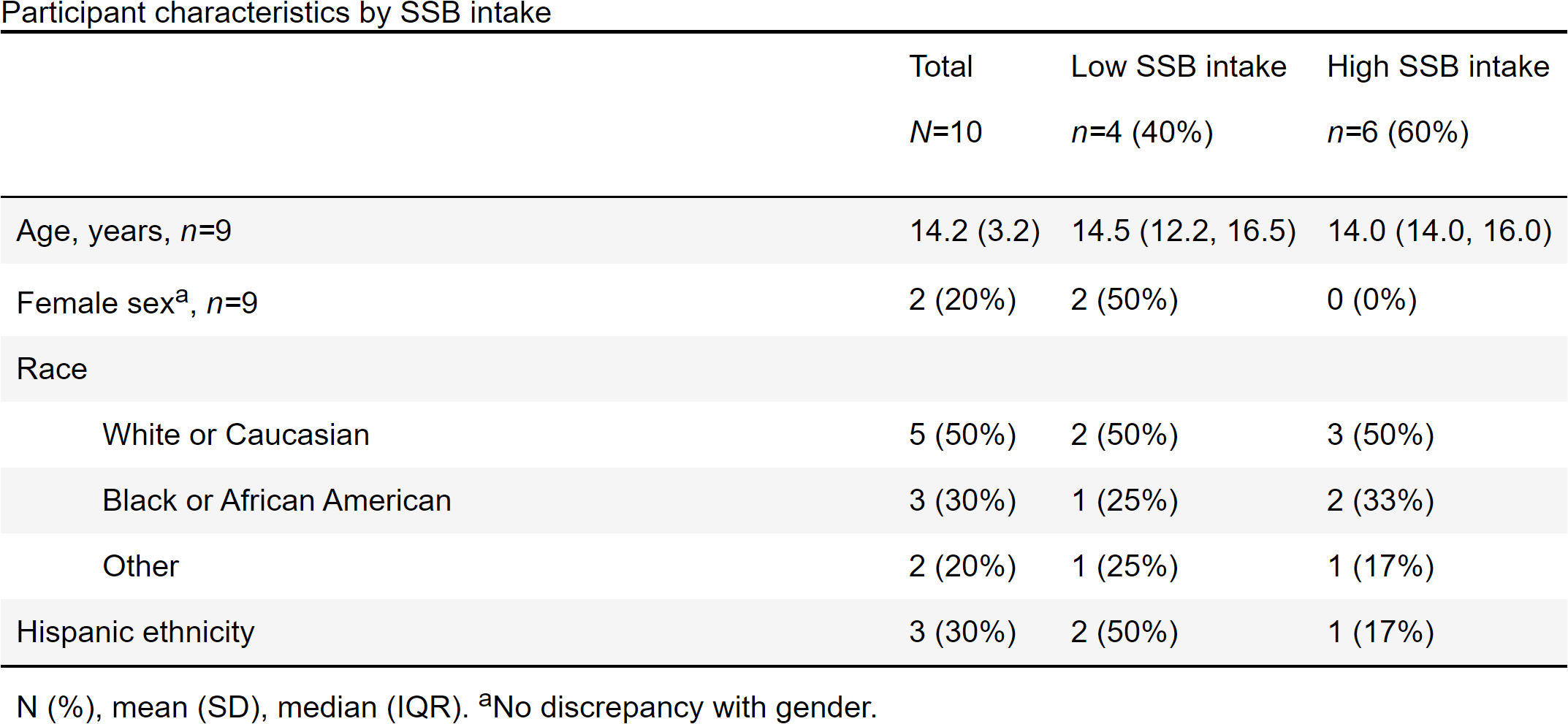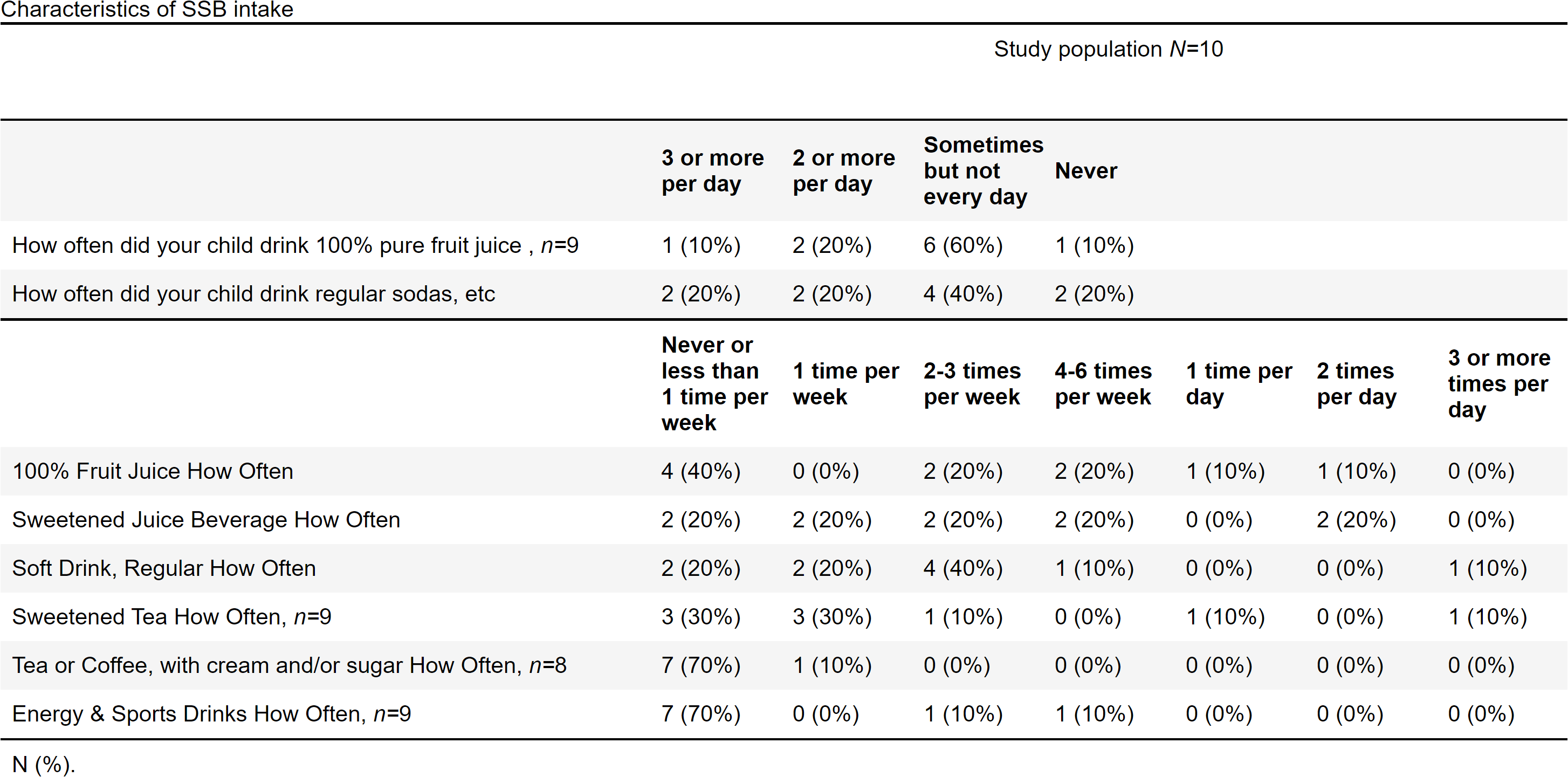Nephrology: Clinical
Nephrology 3: Dialysis and Diversity and Equity in Kidney Health
276 - Prevalence of Sugar-sweetened Beverage Intake: Analysis from Unmet Social Needs, Adverse Childhood Experiences and Sugar-Sweetened Beverage Intake in Youth With Hypertension (SASSY)
Saturday, April 29, 2023
3:30 PM - 6:00 PM ET
Poster Number: 276
Publication Number: 276.252
Publication Number: 276.252
Malia Colden, Wake Forest School of Medicine of Wake Forest Baptist Medical Center, Wake Forest, NC, United States; Beatrice S. Gar, Wake Forest School of Medicine of Wake Forest Baptist Medical Center, Greensboro, NC, United States; Taniya S. Ballard, Wake Forest School of Medicine of Wake Forest Baptist Medical Center, Kennesaw, GA, United States; Claire J. Hoffman, Wake Forest School of Medicine of Wake Forest Baptist Medical Center, Northampton, PA, United States; Andrew M.. South, Wake Forest School of Medicine of Wake Forest Baptist Medical Center, Winston Salem, NC, United States
- MC
Malia Colden, Bachelor (she/her/hers)
Student Researcher
Wake Forest School of Medicine of Wake Forest Baptist Medical Center
Augusta , Georgia, United States
Presenting Author(s)
Background: Despite how common youth-onset hypertension (HTN) is and the risks associated with it, the precise nature of how sugar-sweetened beverages (SSBs) may contribute to HTN in youth remain poorly understood. SSBs include any fruit-flavored drink, sports drink or soda that contains sweeteners, such as high-fructose corn syrup and sucrose. SSBs are a major contributor to added processed sugars within a child's diet and have very poor nutritional quality. Habitual intake of SSBs have been associated with a higher risk for obesity, type 2 diabetes and cardiovascular disorders in adults and children. Prevalence of high SSB intake in youth with HTN is unknown, so it is unclear if SSB screeners have utility in subspecialty clinics.
Objective: To estimate the prevalence of high SSB consumption in youth with HTN
Design/Methods: Pilot prospective, cross-sectional study of youth with HTN disorders who receive care at a tertiary care HTN clinic or nephrology clinic. Data is obtained through patient and caregiver questionnaires, including the BEVQ-15 and two-question SSB clinical screener. We defined our exposure of high SSB intake as two or more SSBs per day. One-sample Z test for binomial proportions for power and sample size calculations were performed and identified a target sample size of 34 participants. We estimated that high SSB intake prevalence would be 65%, compared to 43% prevalence reported in the literature of the general pediatric population.
Results: As of today, data has been collected from 10 participants. The mean age was 14.2 years (SD 3.2), 50% were White/Caucasian, 30% were Hispanic ethnicity, and 20% were female (Table 1). Interim high SSB intake prevalence is 60% (p=0.28). Soft drinks were reported to be consumed most often, with 40% of participants reporting consumption 2-3 times per week (Table 2).
Conclusion(s): Our interim data reports high SSB intake prevalence of 60%, compared to the general pediatric population of 43%, although it was not statistically significant. Ongoing steps for this study include continued patient recruitment and investigation of how several domains of social determinants of health impact SSB intake in this population. Results from this study will inform clinical guidelines regarding SSB consumption and provide support for implementing SSB screener questions in subspecialty clinic settings.


